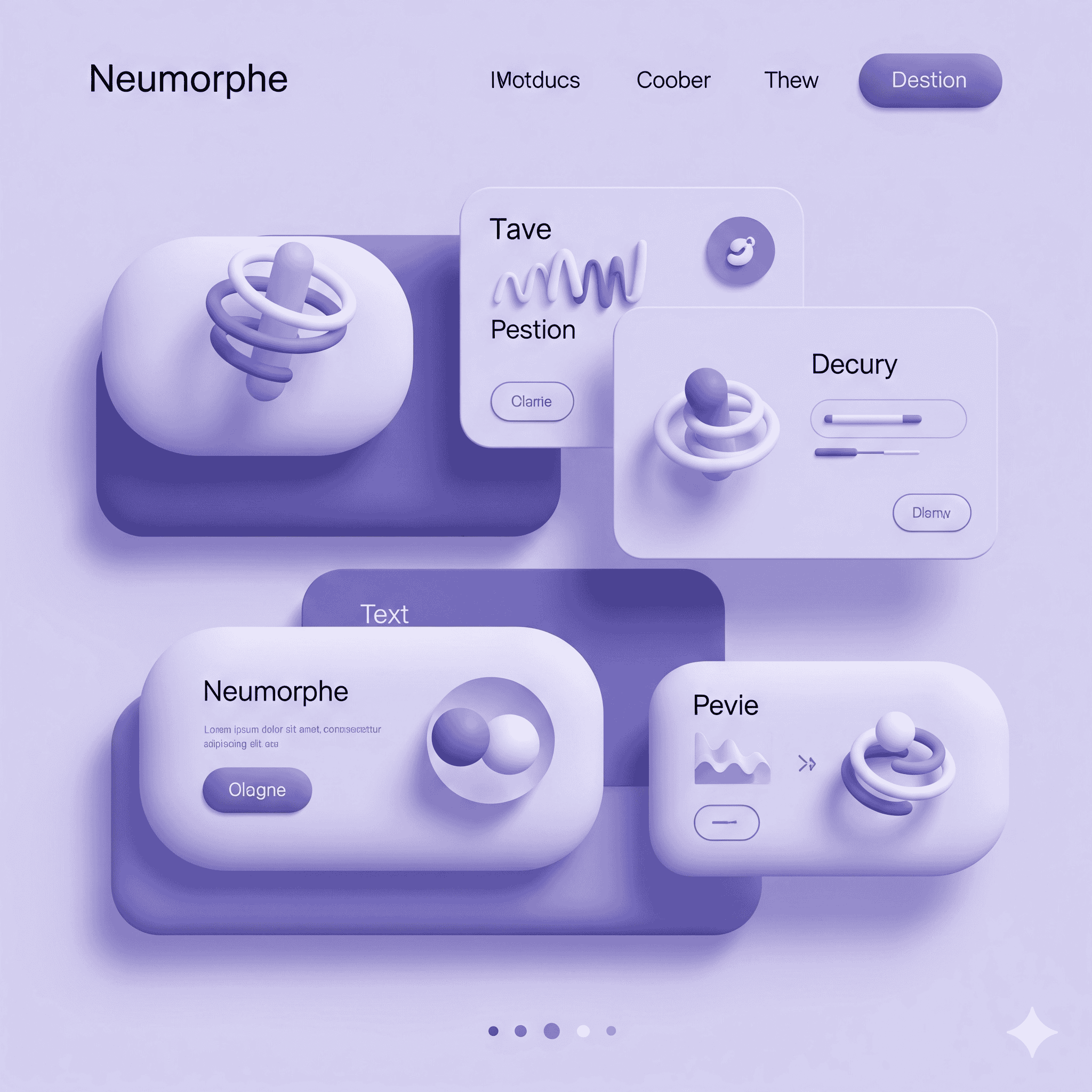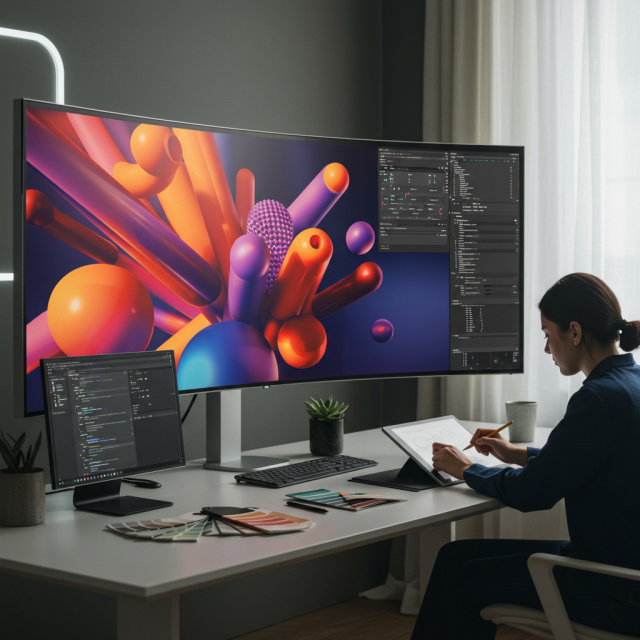In an increasingly competitive market, brands must go beyond aesthetics and functionality to forge meaningful connections with their audience. Immersive creative design offers an innovative pathway to elevate brand perception, boost engagement, and create memorable user experiences. By focusing on multisensory storytelling, dynamic visuals, and seamless interaction, designers can craft environments that captivate, inform, and inspire. As technology continues to evolve rapidly, the boundaries between physical and digital experiences are blurring. Consumers expect more engaging content that responds to their actions, preferences, and environments. Immersive design leverages the latest advancements in augmented reality, virtual reality, artificial intelligence, and motion graphics to create dynamic interfaces that feel alive. At its core, it is about putting users at the center of a narrative, allowing them to interact, explore, and discover on their own terms. Let us dive into how you can harness these opportunities to elevate your brand and deliver unforgettable experiences.
What Is Immersive Creative Design?
Immersive creative design is an approach that combines visual, auditory, and interactive elements to draw users into a cohesive narrative or environment. Unlike traditional graphic design that focuses primarily on static layouts and color schemes, immersive design integrates motion, sound, and story to create a rich multisensory experience. This holistic methodology emphasizes user engagement from the first interaction, aiming to surprise, delight, and guide audiences through a carefully crafted journey. By leveraging cutting-edge technologies and human-centered principles, immersive creative design can transform simple digital touchpoints into dynamic storytelling platforms that strengthen brand identity and foster deeper emotional connections.
Top Trends Shaping 2025
Augmented Reality and Virtual Reality
Augmented reality and virtual reality are becoming increasingly accessible thanks to mobile hardware improvements and browser-based AR frameworks. Brands are integrating AR experiences directly into websites and social media campaigns, allowing users to virtually try on products, visualize furniture in their homes, or explore immersive brand worlds from their smartphones. On the VR side, interactive brand experiences hosted on popular headsets engage users in fully 3D environments, ideal for product demos, virtual showrooms, and branded storytelling. In 2025, expect to see more seamless AR and VR integrations that run on standard devices without requiring advanced downloads or plugins.
Micro Interactions
Micro interactions are the subtle animations and feedback loops that respond to user input in real time. From a button ripple effect to an animated progress bar, these tiny moments of delight guide users through a digital experience and reinforce positive brand interactions. In immersive creative design, micro interactions are elevated with dynamic particle effects, responsive 3D transformations, and context-aware animations that adapt based on user behavior. Prioritizing smooth, well-timed micro interactions can significantly increase user satisfaction and make navigation feel intuitive and engaging.
3D Graphics and Neumorphic Design

Three-dimensional graphics, once reserved for high-end projects, are now standard practice in web and app design thanks to frameworks like Three.js and Babylon.js. Neumorphic design, which merges skeuomorphism with flat design, adds soft shadows and embossed elements to create a realistic yet modern interface. Combining 3D objects with neumorphic styling results in interfaces that feel tactile and approachable. Whether you are showcasing a product from every angle or building an interactive game-like experience, 3D design can captivate users and make your brand stand out in a crowded digital landscape.
AI-Driven Personalization
Artificial intelligence and machine learning are transforming how designers personalize user experiences. From predictive content recommendations to layout adjustments based on browsing history, AI-driven design adapts interfaces to the unique preferences of each visitor. Chatbots and virtual assistants powered by natural language processing guide users through complex tasks, delivering tailored support on demand. As AI algorithms become more sophisticated, we will see real-time content generation and dynamic interface transformations that respond to user emotions and engagement levels, elevating immersive creative design to unprecedented levels of customization.
Voice User Interfaces
Voice user interfaces are gaining traction as smart speakers and voice assistants become ubiquitous. Designing for voice requires a shift away from purely visual interactions to a conversational, audio-centric flow. Immersive creative design leverages spatial audio, tone modulation, and contextual prompts to guide users through voice-based experiences. Brands that incorporate voice search functionalities, hands-free navigation, or interactive audio content can tap into new accessibility opportunities and create more natural interactions with their audiences.
Key Techniques for Immersive Experiences
Story Driven Narratives
At the heart of every memorable immersive design is a compelling story. Story-driven narratives provide users with a roadmap that unfolds as they interact with the interface. Whether you are illustrating a brand origin story or guiding users through a virtual showroom, crafting a clear narrative arc with defined characters, settings, and objectives boosts engagement. Use visual cues, sequential animations, and paced audio to reveal key moments and keep users invested in the journey.
Dynamic Motion and Transitions
Motion design breathes life into static elements by introducing fluid transitions, parallax scrolling, and responsive animations. Dynamic motion guides the user’s eye, emphasizes important content, and conveys a sense of depth. To optimize performance and maintain user focus, employ motion sparingly and purposefully, using easing functions to create natural transitions. Micro delays, spring animations, and scroll-triggered effects can enhance the feeling of immersion when applied thoughtfully.
Immersive Audio Cues
Sound design is often overlooked in web and app development, yet it is a powerful tool for immersion. Incorporate ambient background audio, subtle sound effects, and voice-overs to deepen emotional connections. Spatial audio techniques, which simulate sound direction and distance, can be used to create immersive environments that respond to user interactions. Always provide controls to adjust volume or mute audio for accessibility and usability.
Essential Tools and Resources
- Adobe XD A versatile prototyping tool that supports real-time collaboration, advanced animations, and voice design features. Its intuitive interface enables designers to map out interactive journeys with minimal setup.
- Figma with Plugins Figma offers cloud-based design collaboration and a growing ecosystem of plugins for immersive prototyping, AR simulations, and motion design. Plugins like Figmotion and AR Mixer extend its capabilities.
- Blender A free open source 3D creation suite ideal for modeling, texturing, and rendering 3D assets. Export models to web-friendly formats and integrate with Three.js for interactive experiences.
- Three js and Babylon.js JavaScript frameworks for building real-time 3D graphics directly in the browser. Both libraries support WebGL rendering and advanced shaders for high-performance immersive visuals.
- Lottie and Bodymovin Tools for exporting After Effects animations as lightweight JSON files that can be rendered natively on web and mobile. Perfect for implementing smooth micro interactions and looping animations.
Case Studies: Real World Success Stories
Brand A Virtual Showroom
A global furniture company launched an AR-powered virtual showroom on its website, allowing users to place 3D models of couches, tables, and decor items in their own living rooms. By integrating real-scale measurements and true-to-life textures, users could preview products before purchasing. The campaign saw a 35 percent increase in online sales and a 50 percent reduction in return rates, demonstrating the power of immersive design to bridge online and offline shopping experiences.
Interactive Storytelling for Nonprofit Campaign
A nonprofit organization used a blend of 3D environments, ambient audio, and voice narration to tell the story of endangered wildlife habitats. Visitors navigated an interactive map that responded to clicks with detailed animations, soundscapes, and call-to-action prompts for donations. Engagement time doubled compared to previous campaigns, and donation conversions increased by 25 percent, illustrating how immersive narratives can drive empathy and action.
Best Practices and Tips
- Prioritize User Centricity. Always start with user research and journey mapping. Understand pain points, motivations, and accessibility needs to ensure your design is inclusive and intuitive for diverse audiences.
- Optimize Performance Immersive visuals can be resource-intensive. Compress assets, lazy load content, and use hardware-accelerated animations to maintain smooth experiences across devices.
- Ensure Accessibility: Provide alt text for animations, transcripts for audio content, and customizable interface settings. Follow WCAG guidelines to make immersive experiences accessible to all users.
- Iterate and Test Conduct usability testing and A/B experiments to validate design hypotheses. Gather feedback early and often, then refine interactions to improve engagement and satisfaction.
The Future of Immersive Creative Design
Looking ahead, immersive creative design will continue to evolve with emerging technologies such as spatial computing, biometric feedback, and real-time generative content. Designers will leverage eye tracking and emotion detection to adapt interfaces on the fly, while wearable devices will open new possibilities for hands-free interactions. As privacy standards and ethical considerations take center stage, responsible design practices will balance personalization with user autonomy. The future promises even deeper levels of immersion and connection between brands and their audiences.
Conclusion
Immersive creative design is more than a trend; it is the next frontier in user experience. By embracing the latest tools, trends, and techniques, and by centering your design process on user needs and storytelling, you can craft captivating experiences that elevate your brand and drive measurable results. Start experimenting with the strategies outlined in this guide, and don’t be afraid to push the boundaries of what is possible. The most successful brands will be those that create memorable moments that resonate long after the first interaction.
Learn more about: How Generative AI Is Revolutionizing Creative Design: A Practical Guide









